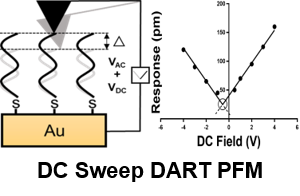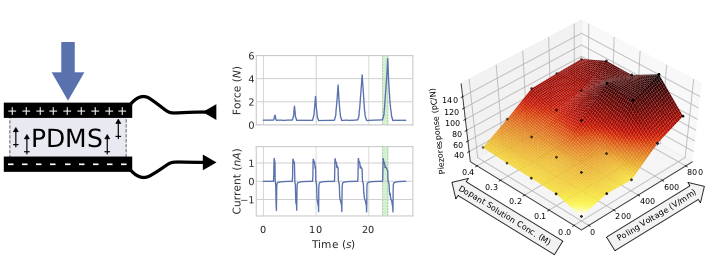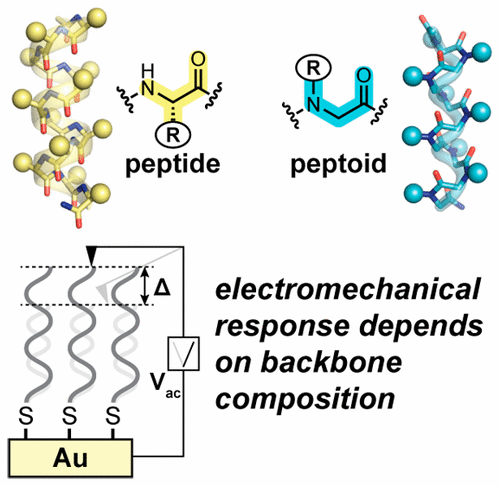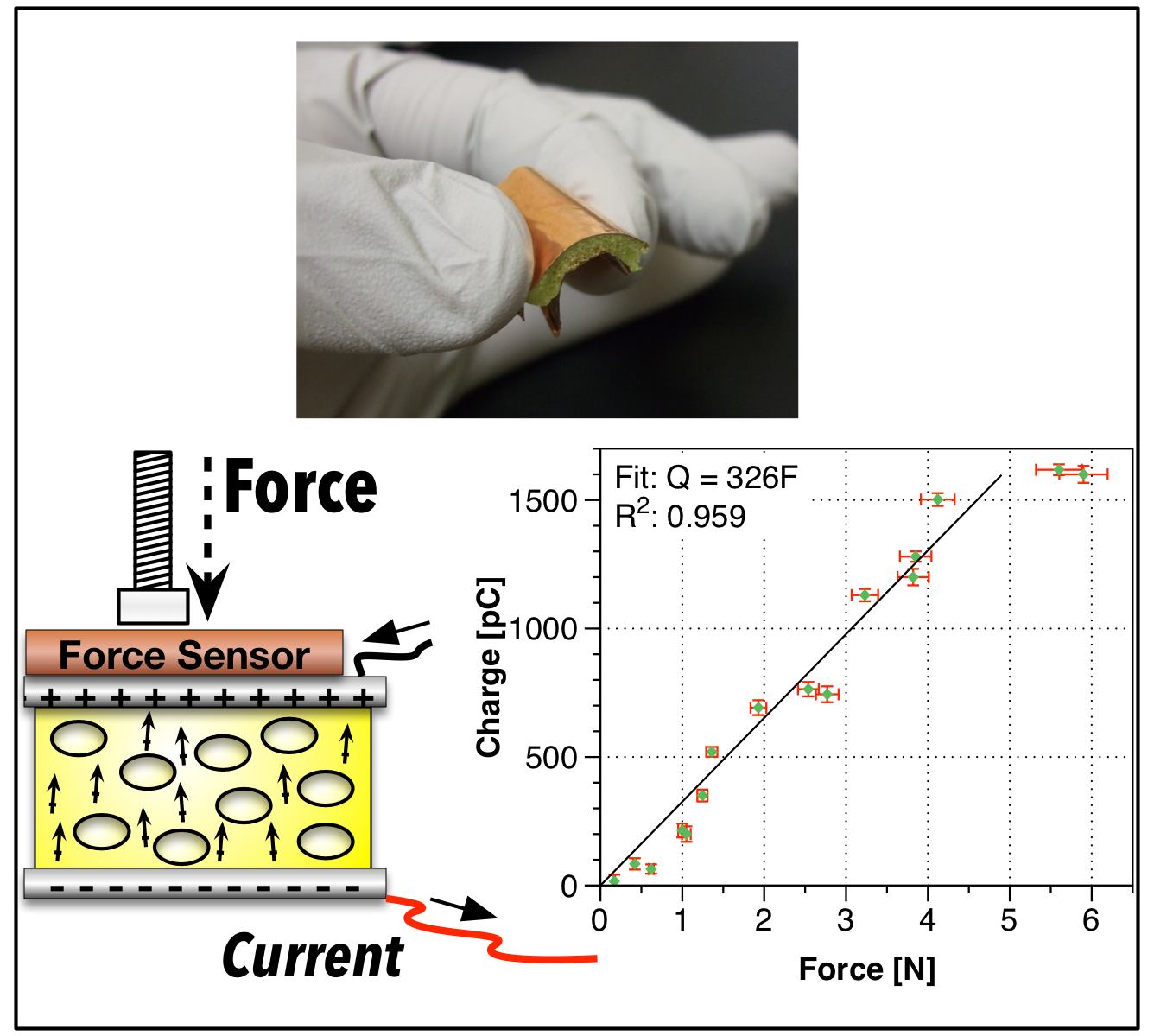Electromechanical Materials
 We investigate the electromechanical effects of individual molecular monolayers and organic polymers. In particular, our group has demonstrated that electric fields can drive mechanical changes in hydrogen bonds and force new conformations in polar molecules such as helicenes, peptides, and a wide variety of other species.
We investigate the electromechanical effects of individual molecular monolayers and organic polymers. In particular, our group has demonstrated that electric fields can drive mechanical changes in hydrogen bonds and force new conformations in polar molecules such as helicenes, peptides, and a wide variety of other species.
Piezoelectric materials deform shape in response to an electric field and are used in everything from high-tech atomic force microscopes (AFM) to airbag impact sensors in cars. Our group is creating nanoscale piezoelectric materials with high deformation. Potential applications include energy generation and highly sensitive sensors.
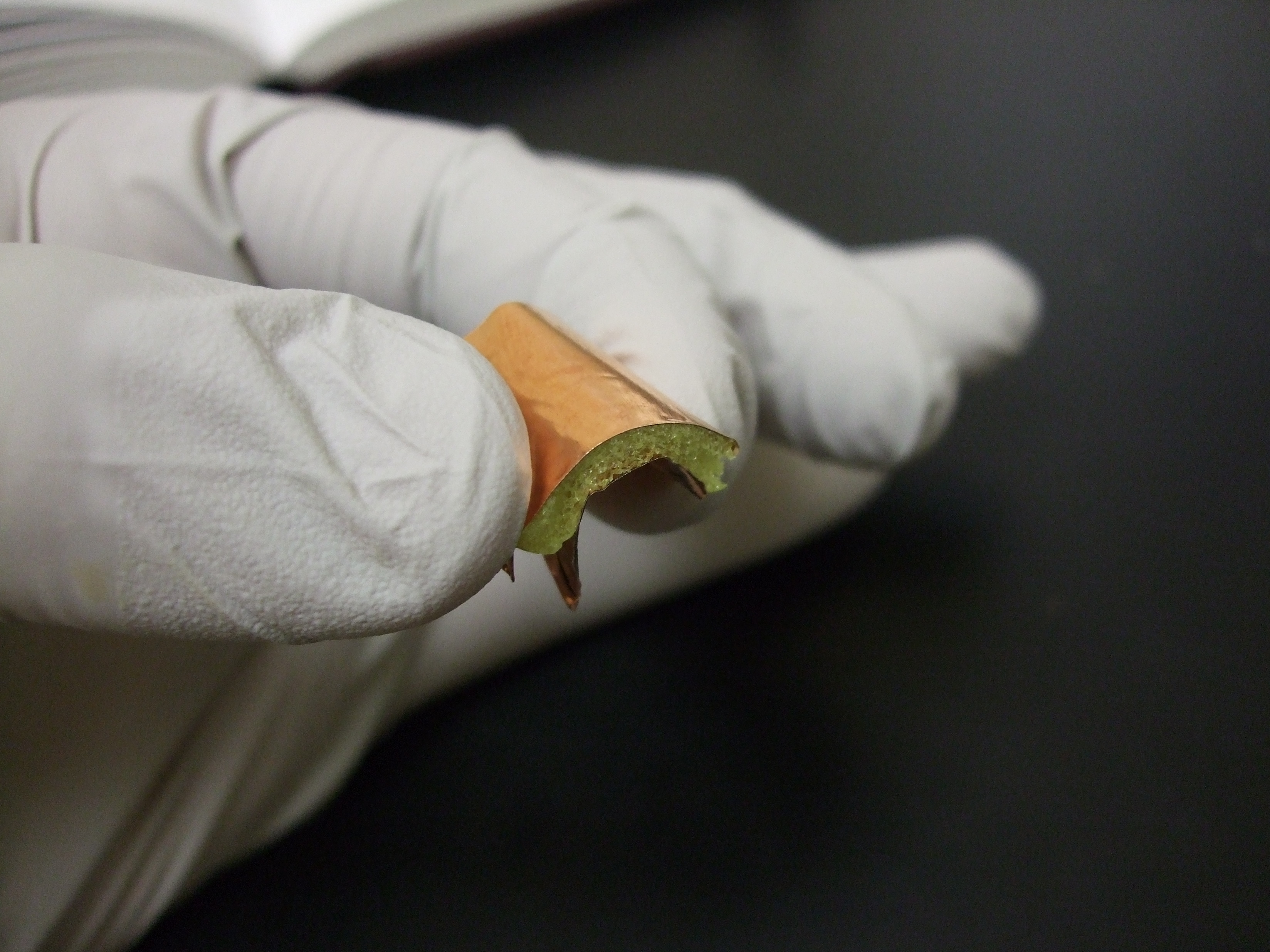 We use computational modeling to understand the connection between molecular structure and piezoelectric response. Based on these simulations, we have started developing “design rules” for synthetic organic piezoelectrics and are using a variety of experimental techniques to characterize monolayers and thin films to characterize this phenomenon.
We use computational modeling to understand the connection between molecular structure and piezoelectric response. Based on these simulations, we have started developing “design rules” for synthetic organic piezoelectrics and are using a variety of experimental techniques to characterize monolayers and thin films to characterize this phenomenon.
Recent Publications:
Accurate Electromechanical Characterization of Soft Molecular Monolayers using Piezo Force Microscopy
Nathaniel C. Miller, Haley Grimm, W. Seth Horne, Geoffrey R. Hutchison. “Accurate Electromechanical Characterization of Soft Molecular Monolayers using Piezo...
Highly Tunable Molecularly Doped Flexible Poly(dimethylsiloxane) Foam Piezoelectric Energy Harvesters
Christopher A Petroff, Thomas F Bina and Geoffrey R Hutchison “Highly Tunable Molecularly Doped Flexible Poly(dimethylsiloxane) Foam Piezoelectric Energy Har...
Interplay among Sequence, Folding Propensity, and Bio-Piezoelectric Response in Short Peptides and Peptoids
Christopher W Marvin, Haley M Grimm, Nathaniel C Miller, W Seth Horne, Geoffrey R Hutchison. “Interplay among Sequence, Folding Propensity, and Bio-Piezoelec...
Molecularly-doped polyurethane foams with massive piezoelectric response
Michael J. Moody, Christopher W. Marvin and Geoffrey R Hutchison “Molecularly-doped polyurethane foams with massive piezoelectric response” J. Mater. Chem. C...
